Warehouses Closed June 6-13 For Exclusive Event
Stacks, Scots and a Revolution...
Stacks, Scots and a Revolution...
And something pink.
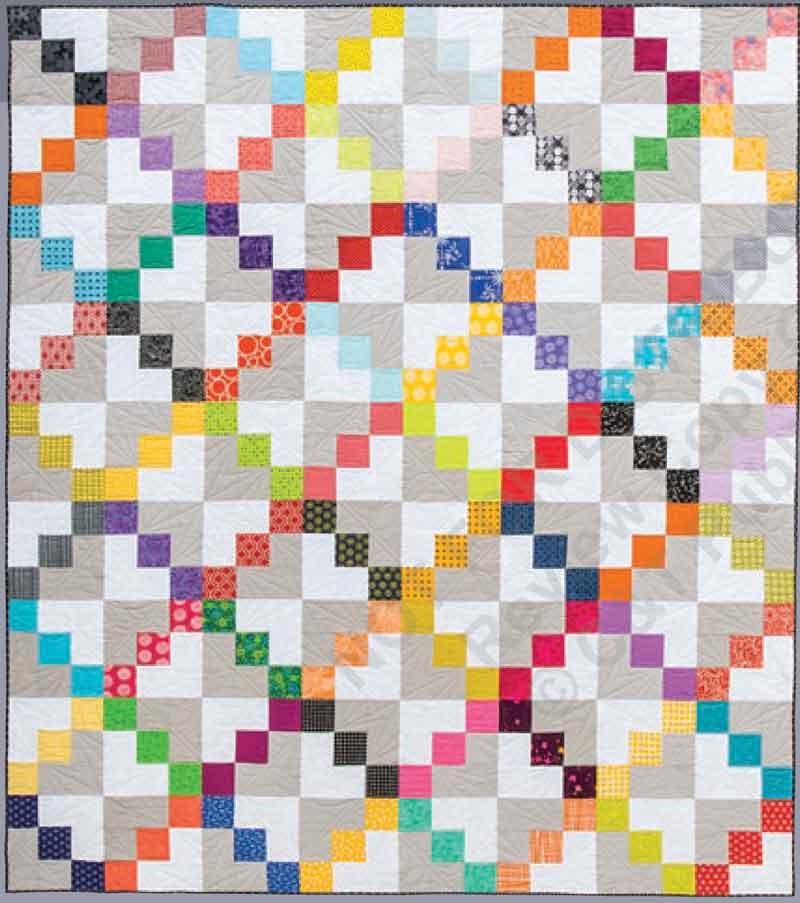
This is part of the Revolution - Nine-Patch Chain, it measures 72" x 81". It's in the coming March 1st book, the Nine-Patch Revolution. It's a new book by pattern designer Jenifer Dick and machine-quilter extraordinaire Angela Walters. Using a variety of techniques from basic strip-piecing to improv, paper-piecing to "wonky", there are 20 quilts that can be made in any style of fabric. While the quilts in the book definitely have a modern aesthetic, the versatility of the nine-patch makes every one of these quilts work for Reproductions, traditional fabrics and Batiks.
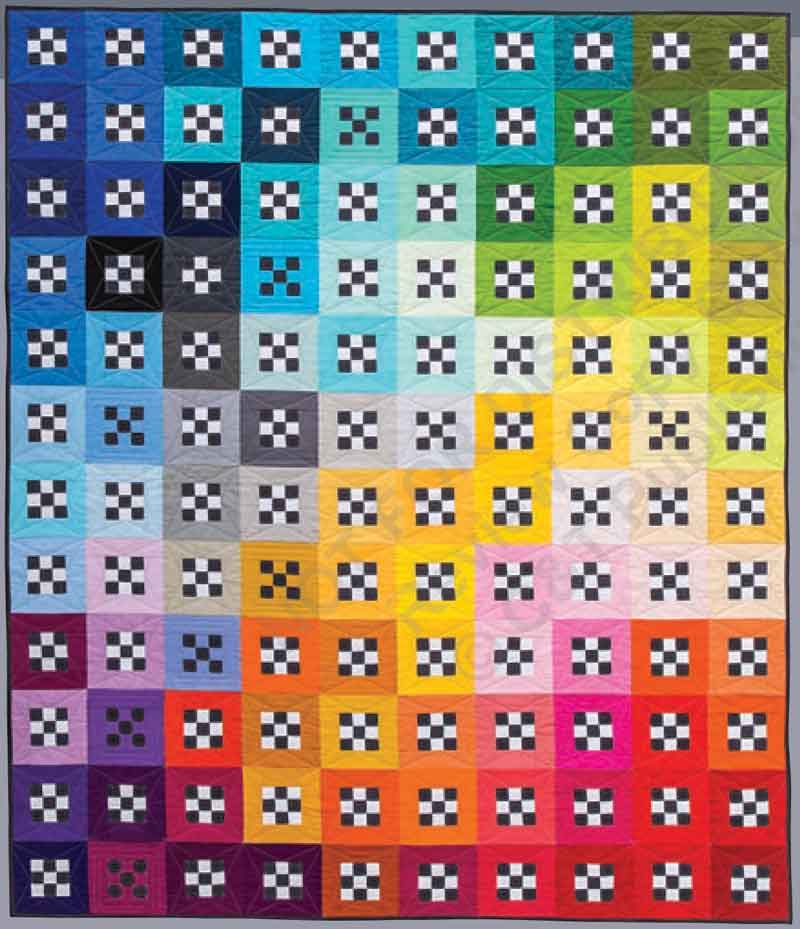
This is Nine-Patch Surround - it measures 60" x 72".
And Solids - let's not forget those. I love how "most" of the nine-patches are black-and-white, but a few are black and the background color of the borders.
The designs in this book are great for beginners because nine-patches are easy to piece. More experienced quilts will like the graphic appeal of the designs, and the opportunity to play with color, pattern and a "less traditional" style of quilt. But what sets this book apart - what makes it special - is the machine-quilting component of it. Each quilt design comes with detail on how Angela quilted it, and a few cases, an option is offered. If this were treated as a workbook, quilters could experiment with color and pattern, then improve their machine-quilting skills.
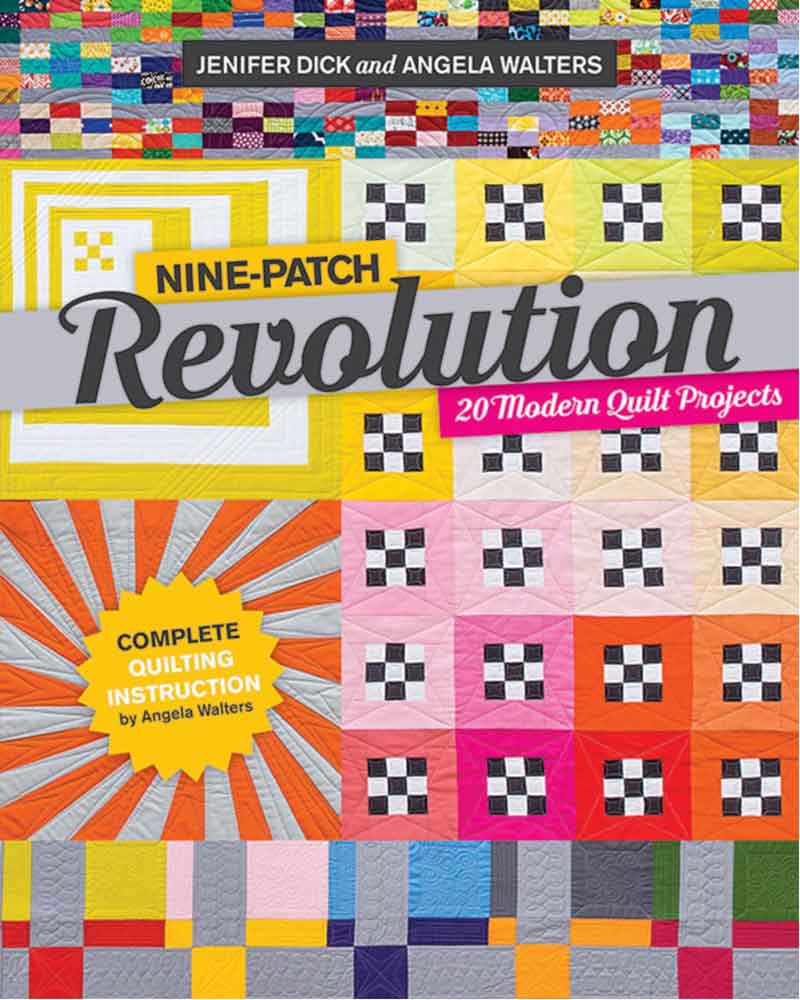
From the content to the layout and appearance, Nine Patch Revolution by Jenifer Dick and Angela Walters for C&T Publishing is a terrific book, especially for modern quilters and anyone wanting to quilt more of their own work.
The Stack part is this book - Stack & Cut Hexagons by Sara Nephew and Marci Baker.

Using a technique similar to that used in the stack-and-whack quilts of years ago, Sara and Marci have created a book filled with triangles and diamonds, pyramids and gem shapes that create stunning repeats just by stacking fabrics in a manner that cuts perfect repeats of each shape. The book is a mix-and-match assortment of thirty-eight hexagon blocks, seven different setting triangles, five pieced borders and twelve quilt layouts. The book is filled with pictures of quilts made using the various options - quilts made by the authors and by others. (So snipping pictures of the author's quilts from the book wasn't do-able.)
While this has never really been "my style" of quilt, I love this book's ability to mix-and-match blocks and parts to create a truly distinctive quilt. There are multiple ways of lining up the fabrics to stack the repeats, and there are tips on which fabrics work best for this style of block.
Stack & Cut Hexagon Quilts by Sara Nephew and Marci Baker for C & T Publishing will be available March 7, 2018.
The upcoming book that surprised me is Modern Scot Patchwork by Kathy Allen.
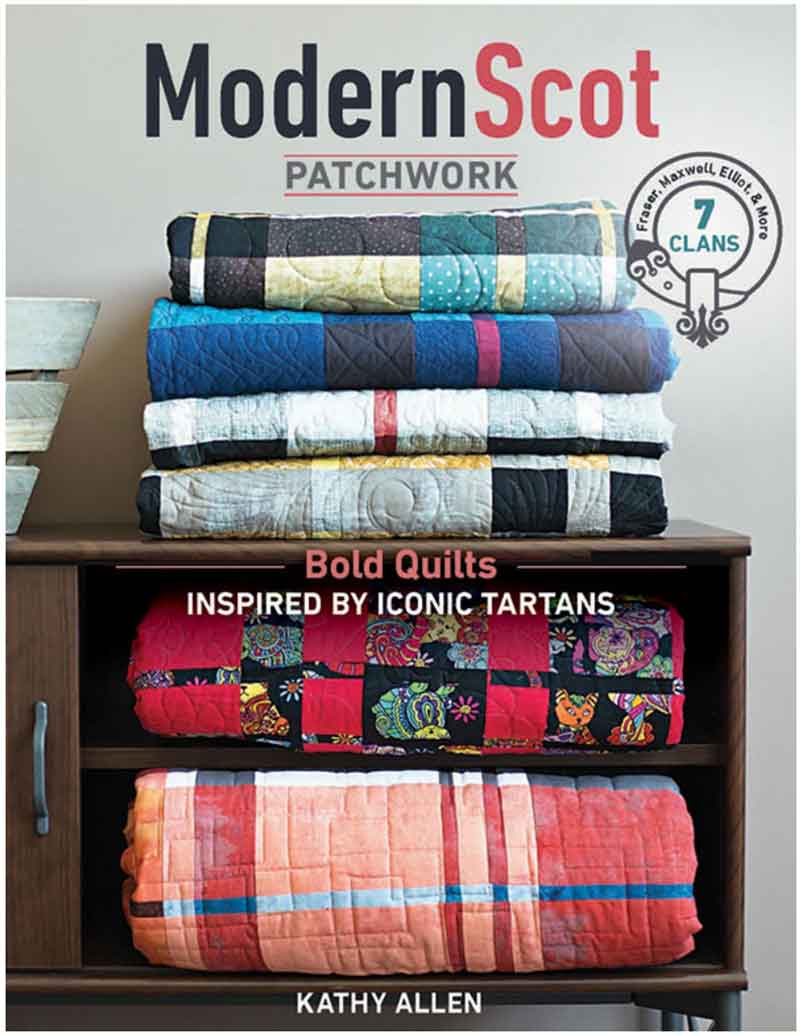
Quilts based on Tartan plaids? Okay... convince me. Done - well done, Kathy!
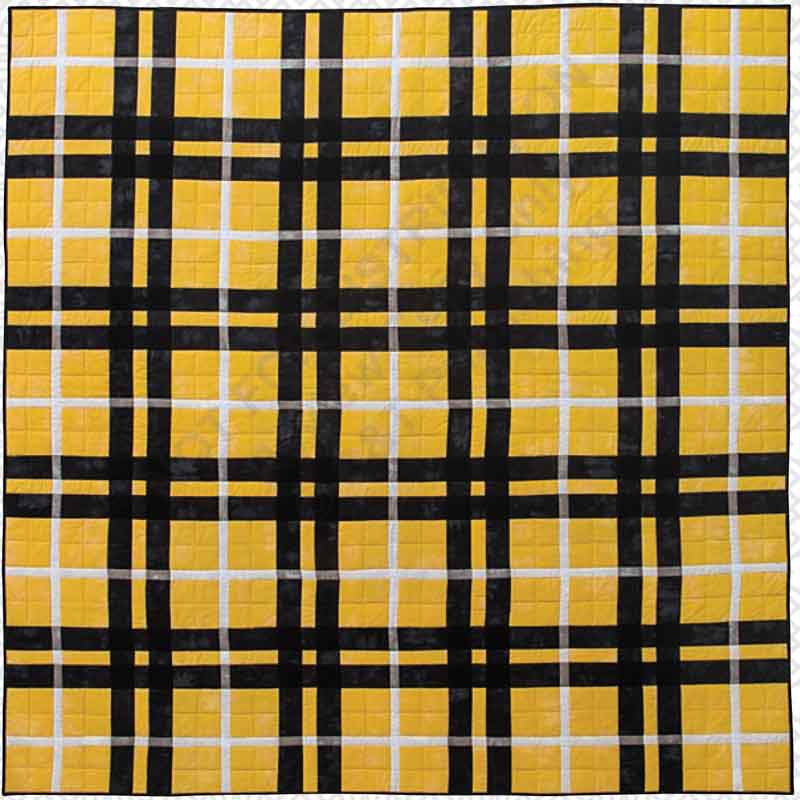
This is Barclay. It's made with Grunge! It measures 81" x 81".
The premise is simple - big modern, graphic quilts based on woven traditional tartans from Scotland. While the design looks simple, actually making it can be a challenge. That's where Kathy has excelled - this is about cutting strips, making strip sets, sub-cutting the strip sets and then joining the parts to make rows. The instructions are outstanding - detailed, comprehensive and easily understood by beginners and experienced quilters.
From stitch length to cutting, pressing to fabric preparation, Kathy has included information that will be useful for making these quilts - and any others you might ever make. Modern Scot Patchwork also includes a History of Tartan.
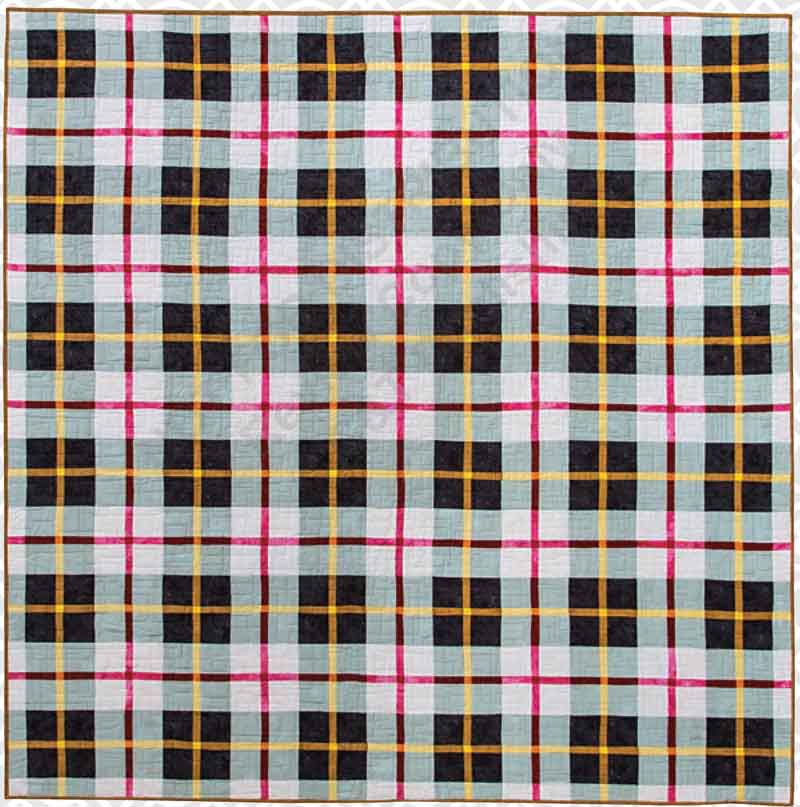
MacRae of Conchra - 78-1/4" x 78-1/4". I love that each quilt design also includes a picture of the original tartan.
Kathy writes, "In the United States, we use the terms tartan and plaid as though they were interchangeable. In Scotland, however, tartan refers to the woolen, latticed fabric that is used for clothing, and plaid refers to how the fabric is used - the large broad cloth that is worn and wrapped around like a skirt, with the excess fabric slung across the shoulder. In Gaelic, plaide means "blanket".
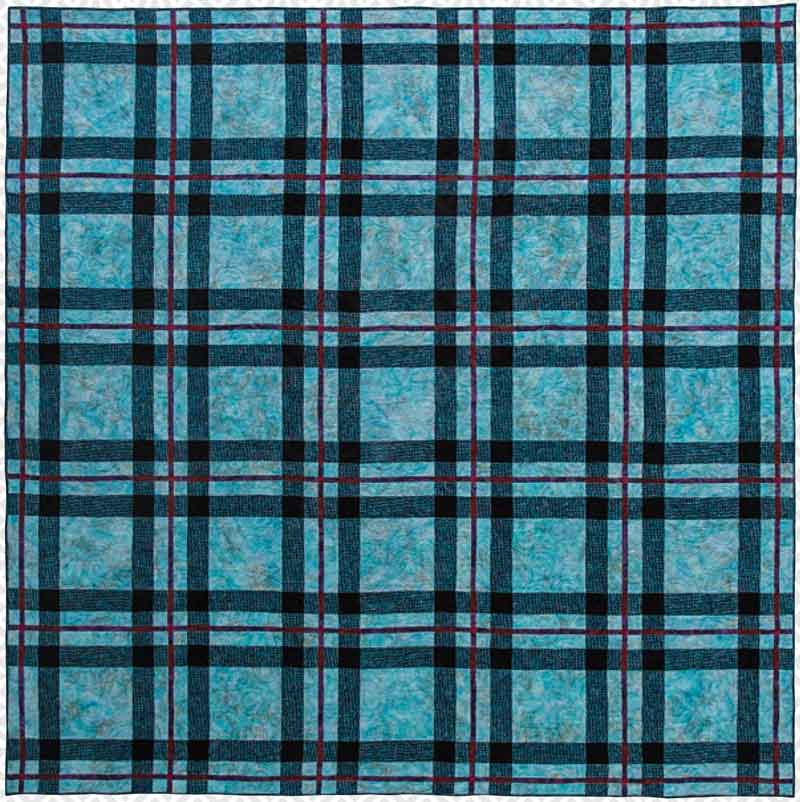
This is Elliot - it measures 108-1/2" x 108-1/2". All three of the quilts I'm sharing are labeled as Beginner Level quilts - yes, I love that Kathy has classified the eight different tartans with difficulty levels. Seven of the quilts also include size variations - from lap quilts to bed-sized quilts.
Of the three books, this is my favorite. From the concept to the designs, the colors to the information presented, this is a really well-written book. If you're looking for modern, graphic quilts that appeal to non-quilty-types, Modern Scot Patchwork by Kathy Allen for C & T is worth investigating. It will be published on March 7th.
That's the Scot.
The pink?
A week or so ago, the lovely folks at Olfa posted this picture to their Instagram.
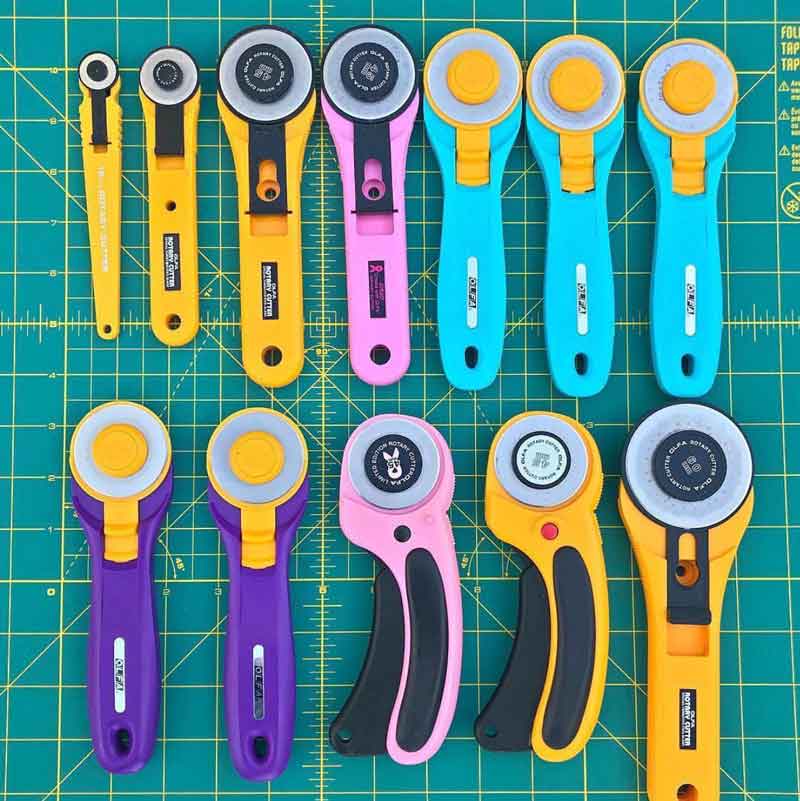
Of course, that immediately got me thinking about my crazy collection of Olfa rotary cutters that date back more than twenty-five years. Yes, I still have my first Olfa.
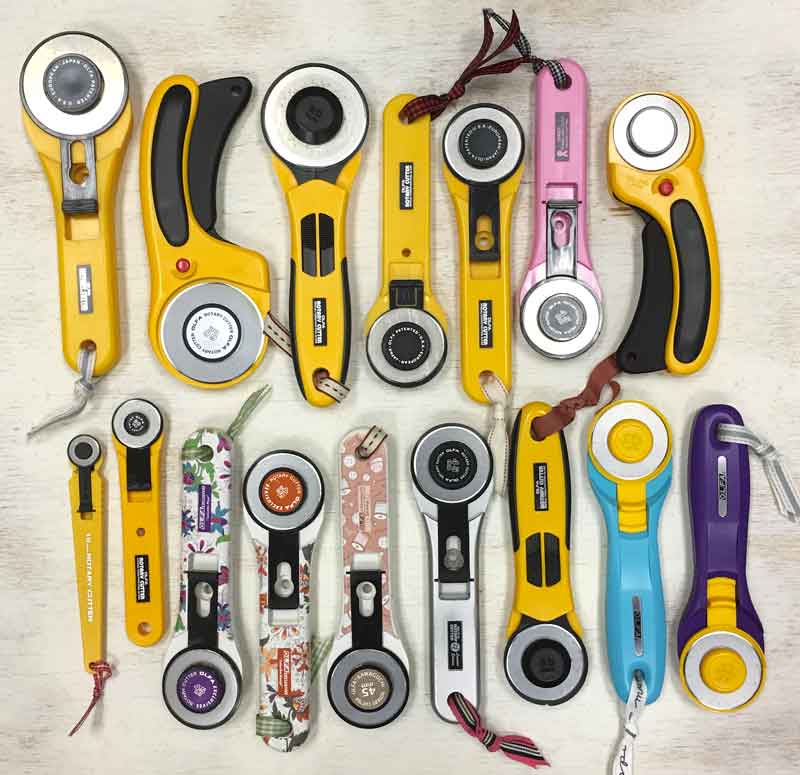
Top row - middle cutter. It's the fourth one in from both sides.
The 45mm is my favorite - by a long shot. It's really the only size I use except when I'm cutting something that really only works well with a bigger or smaller size blade. So maybe 95% of my cutting is with a 45mm blade. What about you?
Oh - the Pink! It isn't the Quilt Pink cutter in the top row... it's the Pink Splash!
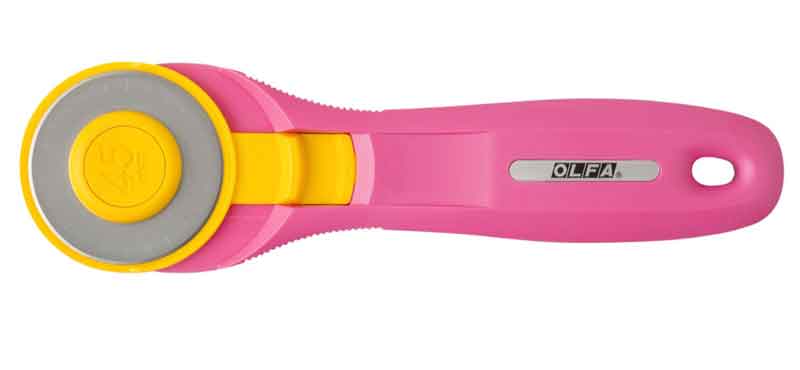
Is there any doubt that I'm going to have to have one? I just have to wait until February 28th.
It's for my collection, of course.
Just so you know, I like to try them all. I thought I would love the ergonomics but... not so much. Okay, not at all. But I love the quick-change style because of the shape of the handle. The Limited Edition prints - I also used to have the purple and orange daisies but with a couple of moves, I can't find that one. (Clearly I'm not suffering the loss.) I do periodically clean out the "extras" and donate them to whatever group or guild is rounding up extra tools and notions for some worthy cause or purpose.
But it does make me curious - do you have more than one rotary cutter? And which kind do you prefer? Do you try different models and makes in search of the "perfect rotary cutter"?
What about blades? Do you buy only brand-names? Or have you experimented with less-costly "off-brands"?
That's it for today - Happy Tuesday!

Comments